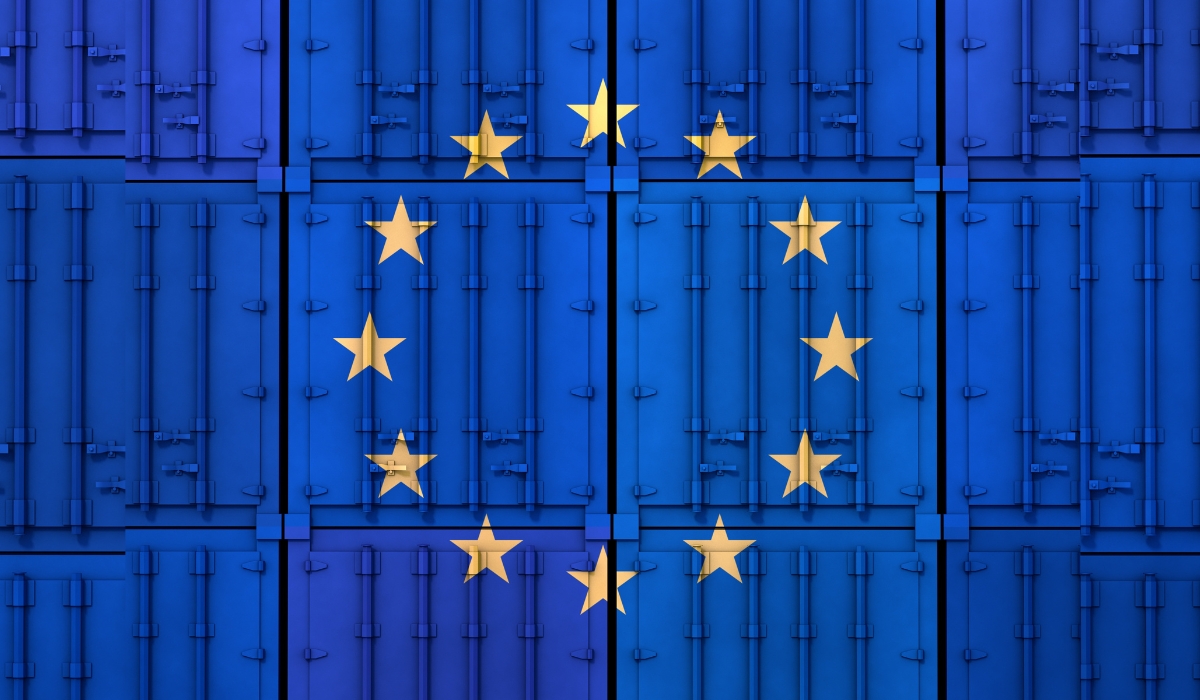
IMD AI Safety Clock makes biggest leap yet amid weaponization and rise of agentic AI
One year after launch, AI risk tracker underlines worrying implications of accelerating AI adoption....

by Arturo Bris Published July 2, 2024 in Geopolitics • 8 min read
Last week, I found myself in Estonia, deep in conversation with one of Skype’s early bosses – Sten Tamkivi, Managing Director from 2005 to 2013 – who is now a prominent investor in European companies.
Skype, the truly European internet phone company, founded by a Swede and a Dane but coded by Estonians, was sold to Microsoft for $8.5bn in 2011. That was just the beginning for Tamkivi.
He’s now a partner at Plural, an Estonian early-stage investment fund, and he outlined to me an optimistic vision – one that I share – for Europe’s economic future.
Our bullish stance on Europe is rooted in economic data – some of which comes from IMD’s new World Competitiveness Ranking, showing six of the top -10 countries are European, with the US lagging in 12th place and China in 14th – as well as insights shared by IMD clients. Both paint a promising picture of the continent’s economic dynamism, one that contrasts sharply with the popular narrative.
Much has been made of Europe’s apparent gap with the US, especially in areas like artificial intelligence adoption. This has raised concerns among European policymakers over (admittedly) weaker investment and heavier regulation, leading to apparent productivity woes across the continent. But I believe they are out of touch.
There is a different story to tell about the European economy, one that puts business leaders like Tamkivi very much at the heart of steady progress.
Despite perceptions of lagging behind the US in productivity, Europe holds significant strengths that often go unrecognized. According to the European Central Bank, since the 1990s, the Eurozone’s productivity has declined by some 20% compared to that of the US. But this is not the full picture.
The dispersion of productivity, rather than average productivity, reveals Europe’s more egalitarian structure, typically offering higher social justice, quality of life, and income levels in many countries.
European economies such as the Nordic nations, as well as Switzerland, the Netherlands, and Germany, all frequently top quality of life indices, such as the OECD Better Life Index. On a per-capita basis, the US lags the net national income of Switzerland, Norway, Luxembourg, and Ireland. 
Still, criticism persists. It’s often said that Europe is falling behind in tech. And, though it has produced some home-grown tech giants like Skype, Spotify, Nokia, Ericsson, and Booking, few have become market leaders. Or they are snapped up by bigger American firms, like Google’s £400mn acquisition of DeepMind, an AI start-up based in London.
Nonetheless, Europe’s capacity for innovation is high. Take AI research: Europe far surpasses the US in terms of the sheer number of publications in journals. Between 2016 and 2020, Europe amassed 82,000 AI publications, compared to America’s 44,000, and China’s 76,000.
The challenge lies in investment, with the US leading in venture capital investment. The amount of VC money invested in the US has passed $77bn so far this year. European nations lag, with the UK top at $8.9bn, Germany at $3.5bn, and France at $3.3bn.
While there is plenty of European capital available for good deals, the problem is that much of it flows overseas to places like Silicon Valley in California. What this indicates is that Europe possesses substantial dry powder but lacks a unified capital market to allocate it locally.

“Consider recent financial crises, such as those involving Silicon Valley Bank, the second-largest bank collapse in US history, and the failure of Signature Bank.”
Indeed, to harness these untapped financial resources, Europe must focus on deeper integration of its capital markets. Fragmentation across different national rules and regulations drives capital away to more integrated markets like the US.
European businesses and governments must collaborate to create harmonized rules and accounting standards, too, ensuring a cohesive environment that fosters investment within Europe, rather than the capital drain we’re currently experiencing.
On top of that issue, another perceived barrier is regulation. It’s a common quip that the US invents, China copies, and Europe regulates. But regulation can be a competitive advantage.
Consider recent financial crises, such as those involving Silicon Valley Bank, the second-largest bank collapse in US history, and the failure of Signature Bank. Arguably, this occurred in the US due to its permissive and facilitative regulatory environment, which stands in stark contrast to the more stringent regulations in the EU. European banks are seen as having better liquidity and stability.
In particular, the Dodd-Frank Act, enacted after the 2007-08 crisis and sparked by the demise of another American bank, Lehman Brothers, aimed to reduce systematic risk. But it was watered down in 2015 under the presidency of Donald Trump. Indeed, the Credit Suisse collapse was influenced by misinformation, which was, in part, a byproduct of the problems faced by Silicon Valley Bank.
Moreover, Europe’s regulatory frameworks for AI (the EU AI Act) and sustainability (the Green Deal to make the EU climate-neutral in 2050) provide clear guidelines for companies. Guidelines that can foster innovation while putting the necessary safeguards in place.
US President Joe Biden has signed an executive order regulating AI, but the EU’s legislation is the world’s first comprehensive AI law. In short, America is lagging.

“One immediate issue to tackle is overcapacity in China, which is flooding European (and US) markets with cheap electric vehicles, computer chips, and solar panels.”
The Green Deal, especially, is a testament to Europe’s leadership in sustainability – demonstrated by its ambitious climate goals, renewable energy leadership, circular economy initiatives, and sustainable finance (like the EU Taxonomy).
This offers European companies a clear license to operate within environmentally responsible parameters. And this regulatory clarity, in many domains, contrasts with the US.
True, America has put in place the Inflation Reduction and the Chips and Science Acts, which collectively provided $400bn in tax credits, loans, and subsidies to develop a domestic clean technology and semiconductor supply chain, and this has become a risk to Europe’s competitiveness. The appealing subsidies, combined with much higher energy costs in Europe, are causing many European companies to move their operations to the US.
What this demonstrates is that protectionism, often viewed negatively, can be strategically deployed to protect European industries as well. Europe needs strategically designed and coordinated policies, as Mario Draghi, Italy’s former prime minister and boss of the ECB, has said.
One immediate issue to tackle is overcapacity in China, which is flooding European (and US) markets with cheap electric vehicles, computer chips, and solar panels. The US has sharply raised tariffs on Chinese goods, a practice Europe should consider, to shield its markets and bolster domestic growth.
But the private sector has a key role to play too. To help drive that growth, European businesses should:
“As well as those three measures, Europe boasts several thriving innovation hubs, such as Berlin, Stockholm, and Amsterdam, which have become magnets for startups and tech talent.”
As well as those three measures, Europe boasts several thriving innovation hubs, such as Berlin, Stockholm, and Amsterdam, which have become magnets for startups and tech talent. These cities provide fertile ground for collaboration, attracting international investors and fostering a culture of entrepreneurship.
Governments and businesses should continue to support these hubs through incentives, streamlined regulatory processes, and investments (such as corporate venture capital).
Europe’s education system is another cornerstone of its economic strength. By investing in higher education and vocational training, the continent can ensure a steady supply of skilled workers to drive innovation and growth.
Enhancing STEM (science, technology, engineering, and mathematics) education and encouraging lifelong learning among employees will equip the workforce with the skills needed to support Europe’s competitiveness.
Additionally, embracing digital transformation is crucial for European businesses to stay competitive. Industry 4.0, characterized by the integration of digital technologies into manufacturing and services, offers immense opportunities for efficiency and growth.
European companies should leverage technologies such as AI, the Internet of Things, and robotics to enhance productivity and innovation.
Ultimately, the perception of Europe lagging behind the US is a misinterpretation of selective metrics. By leveraging its strengths in regulation, innovation, and capital, Europe can boost its economic dynamism.
The transition to a green economy, meanwhile, presents both a challenge and an opportunity for Europe. The Green Deal sets ambitious targets for reducing carbon emissions and promoting renewable energy.
European businesses can lead the way in sustainable practices, developing green technologies, and creating new markets. This not only addresses environmental concerns but also opens new economic opportunities.
While protectionism can shield industries, Europe must also actively engage in global trade. European companies should continue to explore new markets, leveraging the continent’s strong brand and reputation for quality.
Ultimately, the perception of Europe lagging behind the US is a misinterpretation of selective metrics. By leveraging its strengths in regulation, innovation, and capital, Europe can boost its economic dynamism.

Professor of Finance at IMD
Arturo Bris is Douglas Geertz IMEDE 1988 Professor in Geopolitics and Business and Professor of Finance at IMD. Since January 2014, he has led the world-renowned IMD World Competitiveness Center. At IMD, Bris directs the Boards and Risks program and Blockchain and the Future of Finance program. He also previously directed the flagship Advanced Strategic Management program between 2009 and 2013.

September 19, 2025 • by Michael R. Wade, Konstantinos Trantopoulos in Future readiness
One year after launch, AI risk tracker underlines worrying implications of accelerating AI adoption....

August 7, 2025 • by Karl Schmedders, Knut Haanaes in Future readiness
Climate change is making areas “uninsurable.” Businesses must act now—integrate climate risk into strategy or face escalating financial losses....

July 3, 2025 • by Jean-François Manzoni in Future readiness
Mars CEO Poul Weihrauch shares how family ownership enables long-term thinking, purpose-driven leadership, and sustainable growth across generations....

June 12, 2025 • by Howard H. Yu in Future readiness
BYD’s race to the top spot of IMD’s Future Readiness Indicator shows how keeping an eye on your core business while scaling up a few clear priorities is key to success, writes...
Explore first person business intelligence from top minds curated for a global executive audience